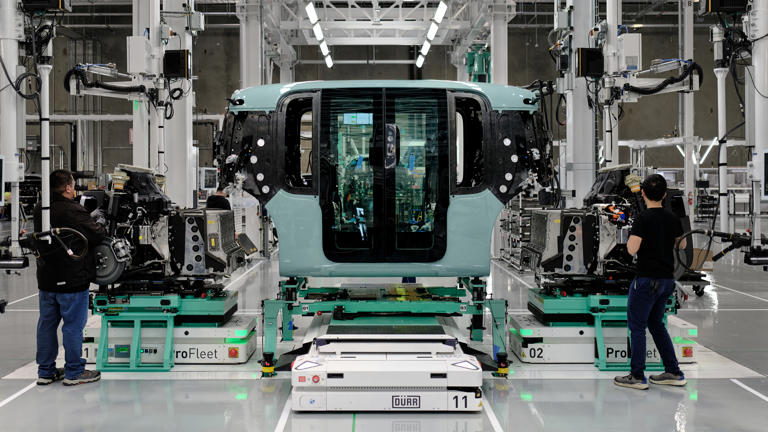- Amazon-backed Zoox opens its first robotaxi manufacturing plant in Hayward, California
- Facility aims to produce 10,000 autonomous vehicles per year, with no steering wheels or pedals
- Commercial service to launch in Las Vegas in 2025, with San Francisco set for 2026
- Zoox targets competition with Waymo and Tesla in autonomous ride-hailing
- Company eyes expansion to cities like Austin, Miami, Los Angeles, and Atlanta
Production Begins in Hayward
Zoox, the autonomous vehicle subsidiary of Amazon, has officially opened its first full-scale production facility in Hayward, California. The company announced the milestone in a press release, stating that the facility is capable of manufacturing up to 10,000 robotaxis annually. These vehicles are uniquely designed for autonomy from the ground up—without any traditional manual controls such as steering wheels or pedals.
Launching in Las Vegas, Then San Francisco
Zoox plans to launch its first commercial robotaxi ride-hailing service in Las Vegas later in 2025. San Francisco is slated to follow in 2026, marking a critical step in the company’s expansion roadmap. Zoox joins a growing field of competitors in the autonomous ride-hailing sector, including Alphabet’s Waymo and Tesla’s still-developing self-driving fleet.
Vehicle Design and Features
Unlike retrofitted self-driving vehicles, Zoox’s cars are custom-built for autonomy. The company’s electric vehicles feature a boxy design with carriage-style seating for up to four passengers. The vehicles are fully bidirectional—meaning they don’t have a fixed front or rear—and can operate in either direction depending on traffic conditions and navigation requirements.
Competition with Tesla and Waymo
Zoox plans to launch its commercial ride service in Las Vegas later this year, followed by an expansion into San Francisco in 2026. The company is positioning itself as a direct competitor to Waymo, a subsidiary of Alphabet that has been operating robotaxis for several years, and Tesla, which is also pushing forward with autonomous ride-hailing services as part of its Full Self-Driving (FSD) strategy.
What sets Zoox apart is its purpose-built approach to autonomy. Unlike retrofitted models from Tesla or Waymo’s modified vehicles, Zoox’s robotaxis are designed from the ground up for driverless operation. They feature a compact, carriage-style interior that seats up to four passengers and operate bidirectionally—meaning there’s no defined front or rear, enhancing flexibility and urban maneuverability.
Operational Challenges and Safety Recall
Despite the progress, Zoox has not been without challenges. The company issued a voluntary recall after a minor incident involving a robotaxi and an electric scooter in San Francisco. No injuries were reported, but the event highlighted the need for continued oversight and safety validations as Zoox scales operations.
Expansion Plans Beyond California
Looking forward, Zoox has set its sights on additional markets beyond Las Vegas and San Francisco. Cities including Austin, Miami, Los Angeles, and Atlanta are under consideration as future deployment zones. With its proprietary technology and manufacturing in place, Zoox appears poised to become a formidable contender in the race to commercialize autonomous mobility at scale.
A global media for the latest news, entertainment, music fashion, and more.















